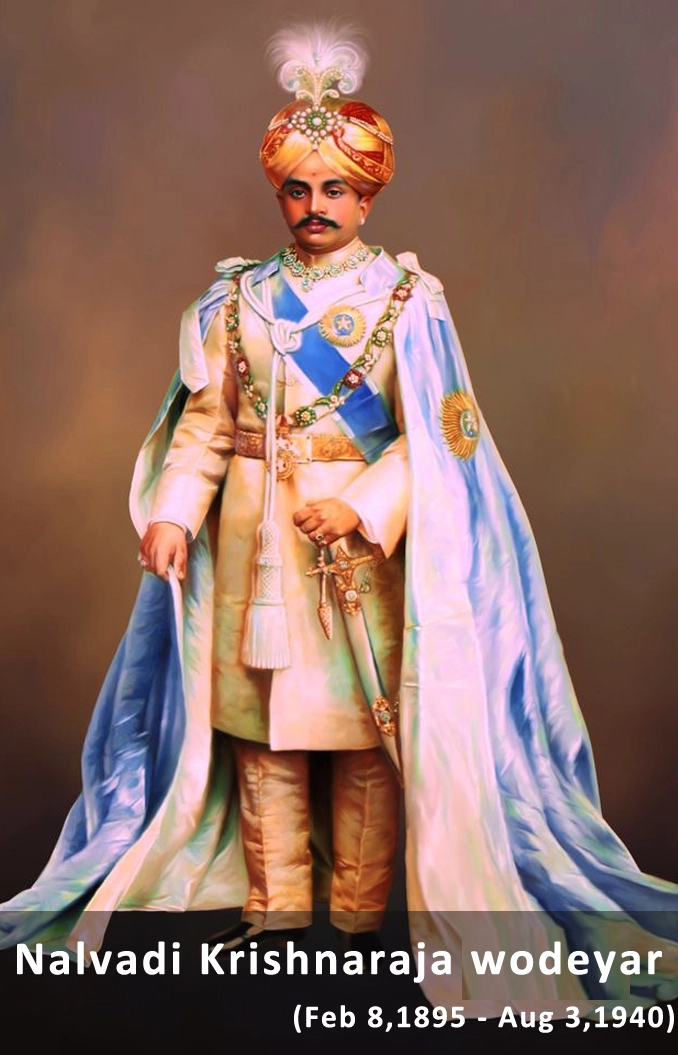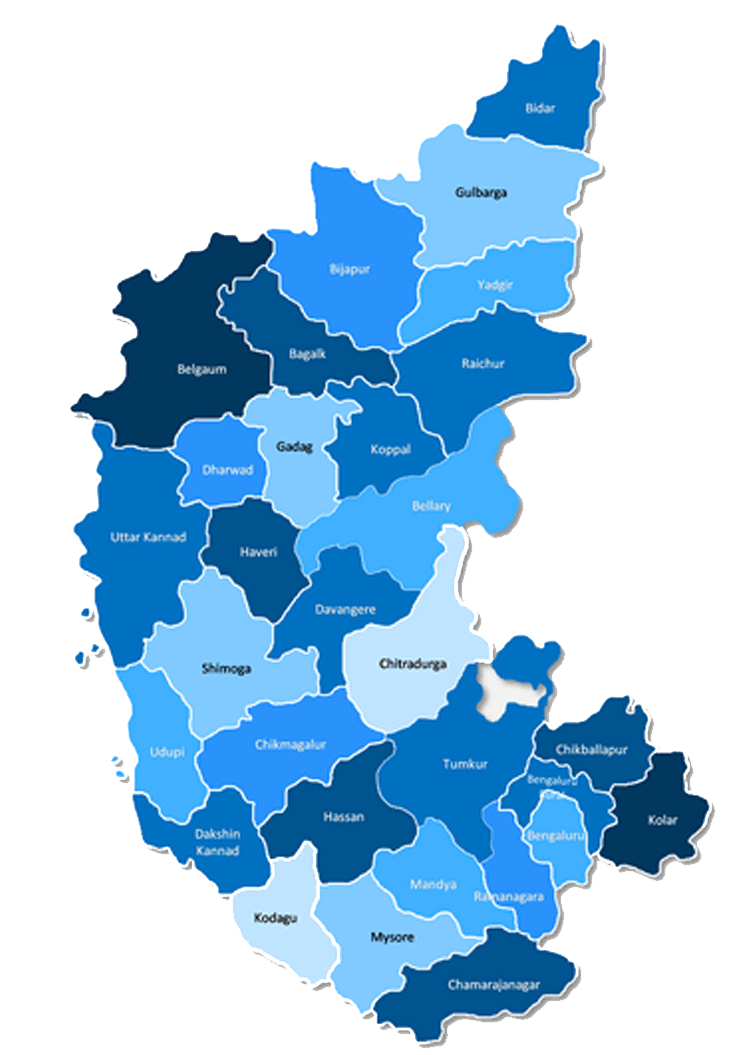THE GENESIS OF SCOUTING AND GUIDING IN THE WORLD
The Bharat Scouts and Guides is a Registered Society under Societies Registrations Act. It is totally voluntary, non-political and secular Organisation. Bharat Scouts and Guides, Karnataka State Association Head office is located at No.39, Shanthigruha, Palace Road, Bengaluru-560001.
The Boy Scout Movement had a simple start in the year 1907 when a 50-year-old Maj. General of Army Lord Baden Powell conducted an experimental camp on Brown Sea Island in Poole Harbour, Southern England with 21 boys. All the boys were from different social backgrounds. The boys arrived on 25.7.1907 for the camp which was inaugurated on 29th and closed on 9th August 1907.The successful conduct of the camp and publication of the Book "Scouting for Boys" in 1908 marked the start of the Boy Scout Movement.
In the year 1909 on 4th September, Crystal Palace Rally was held. It was a unique gathering of about 11,000 Scouts. The rally was held, a year and a half after the publication of Scouting for Boys and two years after Robert Baden-Powell's demonstration on Brown Sea Island Scout Camp. Several hundred girls including one patrol of girl scouts wearing the boy Scout uniform appeared and wanted to join the Scout Movement. Lord Baden Powell decided to start a movement for Girls with the help of his sister Agnes Baden Powell. In 1910, a movement for Girl Scouts was formally founded.


Nalvadi Krishnaraja Wadiyar, the Maharaja of Mysore (reigning from 1902 to 1940), played a significant role in promoting social, educational, and cultural reforms in India. His contributions to the Indian Scouts and Guides movement were particularly noteworthy. Here are some key aspects
Support for the Scouting Movement :
Early Patronage: Nalvadi Krishnaraja Wadiyar was an early supporter of the scouting movement in India. He believed in its potential to inculcate discipline, self-reliance, and leadership qualities among the youth.
Establishment of Units: During his reign, scouting units were established in Mysore, which later inspired similar initiatives across other princely states and British-administered regions in India.
Integration with Education: Wadiyar integrated scouting into the education system in Mysore. Schools were encouraged to establish scouting and guiding units to foster teamwork and community service among students.
SCOUTING IN INDIA
Scouting started in India in the year 1909, when Captain T.H.Baker established the first Scout Troop in Bangalore and got it registered with imperial Headquarters, London. Subsequently, Scout Troops were formed at Bangalore,Calcutta, Kirke (Pune), Shimla, Madras, Jabalpur, Lonavala (Mumbai) and registered with the Imperial Headquarters during 1910 and 1911. These units were open to European and Anglo-Indian Children only.
The first Guide Company in India was started in Jabalpur, Central India in 1911. Within a short span of 2 years, many more Guide Companies were formed in Howrah, Calcutta, Bombay, Madras and other cities but were directly under the control of Imperial Headquarters, London. The first Company of Indian Girl Guides was formed in 1916 at Pune. Later on, many Guide Companies were formed in different cities. In 1917, Lady Abala Bose, wife of the famous scientist Sir Jagadish Chandra Bose, was appointed as the first Indian Guide Commissioner for Indian Guides.

As the Scout Movement was not initially open to the Indian boys, Nationalist leaders of India decided to offer Scouting activities to Indian Boys and Sewa Samiti Scout Association was formed with Headquarters in Allahabad by Pandit Madan Mohan Malviya, Pandit Hriday.
Nath Kunzru and Pandit Sriram Bajpai. Dr.Annie Besant with the help of Shri G.S.Arundale started a separate Scout Association for Indian Boys in Madras. The first Wood Badge Course was conducted in Calcutta in 1922.A Scout Masters training course was conducted atPachmarhi in May 1923. Mr. Vivian Bose had attended the first Wood Badge camp held at Pachmarhi. The first formal Jamboree of Boy Scouts was held in Delhi from 1st to 7th February, 1937.Efforts were made for unification of different scout groups existing in India during the visit of Lord Baden Powell to India in 1921 and 1937 but failed. Major reason for the failure in unification was the promise clause which included the word "Duty to King". Our Patriotic sentiments of our Nationalist leaders did not approve the allegiance to the British Empire and instead it was insisted that allegiance loyalty to the Country should be part of the Scout Promise.
SCOUTING GUIDING IN INDEPENDENT INDIA
After the independence of our country, efforts were made for unification of the Scout and Guide Associations functioning in India. Serious efforts were made by our National leaders like Pt.Jawahar Lal Nehru, First Prime Minister of India, Maulana Abul Kalam Azad, the First Education Minister of India, Shri Mangal Das Pakvasa, Governor of Central Province, and Scout leaders Pandit Hriday Nath Kunzru, Pandit Sri Ram Bajpai, Justice Vivian Bose and others for the merger of the Scout/Guide Associations.

Dr. Tara Chand, Education Secretary, Government of India made significant contribution in finalizing the merger deed. The Final merger took place on 7th November 1950 and the unified Organization came into existence under the Name "The Bharat Scouts and Guides". The Girl Guides Association formally joined the Bharat Scouts and Guides a little later on 15th August 1951.
SCOUTING- GUIDING IN KARNATAKA
In Karnataka, Scout- Guide movement began to grow under the patronage of Nalvadi Sri Krishnaraja Wadiyar, the Maharaja of Mysore. Sri Kanteerava Narasimharaja Wadiyar became the Chief Scout, Sri Jayachamarajendra Wadiyar became the Chief Cub, Sri G. Parasurama was appointed as the Organizing Director of the Scout-Guide Movement. Guiding was first started in 1914 at Baldwin Girls School in Bangalore. (Guiding started at Bishop Cotton Girl’s School in 1922) Gradually the movement spread across the state.
From 1918 to 1926, many Training camps, Rallies and Councils were held. In 1919, Miss Jimme Lazarus was trained in the Guide Movement. She was appointed as Organizing Commissioner by the Imperial Headquarters, London. The Guide Organization was recognized and a State Organization called “The Girl Guides of Mysore” was established in 1927. Rules and regulations were framed for the administration of this organization. Guide Books were published in Kannada, English, Urdu language. In 1924, Gandhiji attended the Belgaum Congress session and expressed his appreciation for the service rendered by Scouts and Guides and said “I pray that there are Scouts- Guides children in every home in India”.

In 1924, the movement organized First Aid Stations and Relief centers for victims. On August 15, 1947 the first ever Scout-Guide Rally was held in Bengaluru to celebrate the first Independence Day. In 1947, the Cantonment Organization was merged with the Mysore Scout- Guide Organization. In September 1952, the “Boy Scouts of Mysore” decided to join the newly formed The Bharat Scouts and Guides.
Lady B.P’s participation in the National Jamboree held at Sadashiva Nagar, Bangalore in 1960 is a Historical Event. In 1989, the 50th Anniversary of World Association Girl Guide and Girl Scouts(WAGGGS) was celebrated with great pomp in the premises of Mysore Palace. In 2003, Guide Wing celebrated the 75th Anniversary of WAGGGS at Bharat Scouts and Guides Campus, Shanthigruha, Bengaluru. On this occasion, senior volunteers like Mrs. Leela Anjanappa, Mrs. Lalitha Krishnaswamy, Mrs. Bopaiah, Mrs. Octavia Albuquerque, who worked hard for this organization were felicitated.
In 1971, during the time of the Governor Mr. Dharmaveera, “Shanthigruha” was allotted to the Guide Wing. The State Office of the Guide was established in this premises.
This premises was developed as a training centre. It is adjacent to Maharani College and full of Greenery. Cottages were built for Stay of Visitors, Trainers and Trainees. All necessary facilities for camping were provided. Guest houses and halls were also built.
Each of the Chief Commissioners of this movement in Karnataka from its inception has rendered remarkable service. During the period of Mr. KondajjiBasappa, who was the Chief Commissioner of the State from 1964 to 1982, this movement got a massive drive and spirit. During this time, significant development works took place in Besant Park near Doddaballapur, and Kondajji Training Center near Davanagere was also established. These achievements remain a memorable record in the history of Scouts and Guides movement in Karnataka. Among the Scout- Guide Training and Camping Centers in India. Dr. Annie Besant Scouts and Guides State Training and Camping Center, Doddaballapura, Bengaluru Rural and Kondajji Basappa Scouts and Guides State Training and Camping Center, Kondajji, Davanagere are reputed to be the most equipped centers.
The leaders who served this movement in Karnataka with dedication so far, Mr. Frank C. Irvine of Canada (1918-1919) and Mr. Sanjeeva Kamath (1920-1922) as Directors, Justice K. Shankara Narayana Rao (1922-1943), Major Y.V.K. Murthy (1943-1949), Prof. P. Shivashankar (1949-1953), Sri J.B. Mallaradhya (1953-1960), Prof. P. Shivashankar (1960-1964), Sri KondajjiBasappa (1964-1982), Sri V.P. Deenadayalu Naidu (1983-1993), Sri Kondajji B. Shanmukhappa (1993-2014) have served as the State Chief Commissioner. Since 2014 Sri P.G.R. Sindhia, who was a Former Minister in the State of Karnataka holding different portfolios, is the State Chief Commissioner and is developing the movement in Karnataka to an International level.

Copyright © 2024 All Rights Reserved | The Bharat Scouts and Guides, Karnataka.